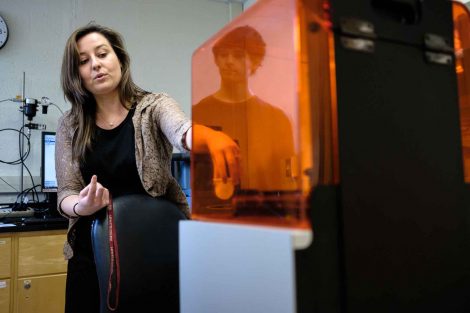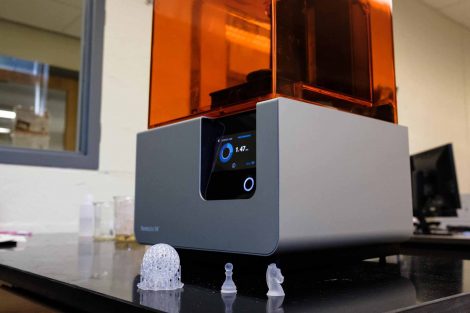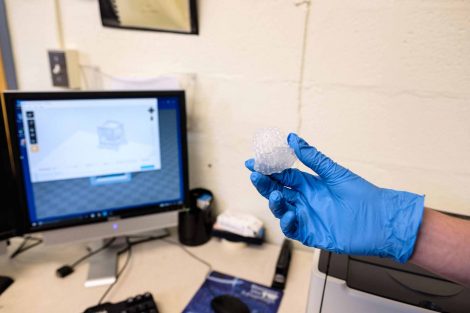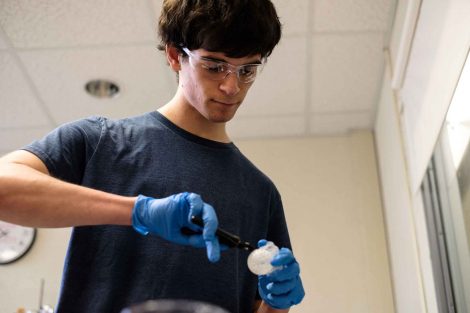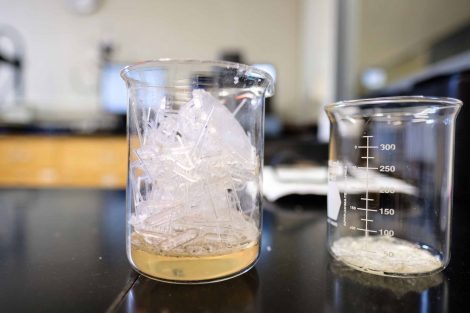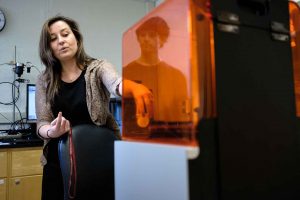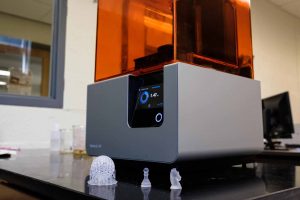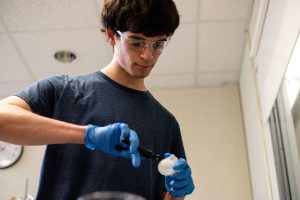Professor and student work on ways to make 3D printing cost effective
Story by Bryan Hay, photos by Clay Wegrzynowicz
Not too long from now, 3D printers will likely take their place among other common household appliances, turning out everything from children’s toys to jewelry.
As we head into that future, EXCEL Scholar Jacob Miller ’20 (chemical engineering) and Melissa Gordon ’11, assistant professor of chemical and biomolecular engineering, are researching ways to make the printing process cost effective.
They’ve spent the summer working with a type of 3D printing called stereolithography, a technology that converts a liquid resin into solid parts, layer by layer, by selectively curing them using a UV light source.
A UV laser beam scans the surface of the resin and selectively hardens the material corresponding to a cross section of the product, building the 3D part from the bottom up. The process cures the liquid, which hardens instantly when the UV laser touches it, forming the first layer of the 3D-printed object.
“The main focus of the summer has been to try and limit the amount of resin needed to make a part and still maintain its strength,” Miller says. “Basically we print out a specific shape with a certain internal geometry and then map out the stress we apply to determine the stiffness of the material.”
“It tells us how the material behaves under stress,” says Gordon, adding that 3D printing is getting to the point where prototypes can be made rapidly, inexpensively, and with impressive detail.
Miller is eager to show dense chess pieces that look like they were cut from frosted glass. They were made with a 3D printer using the stereolithography process.
“It’s still a mostly industrial process now, but this technology will be in the household in the next 20 years as the processed is refined,” he says.
